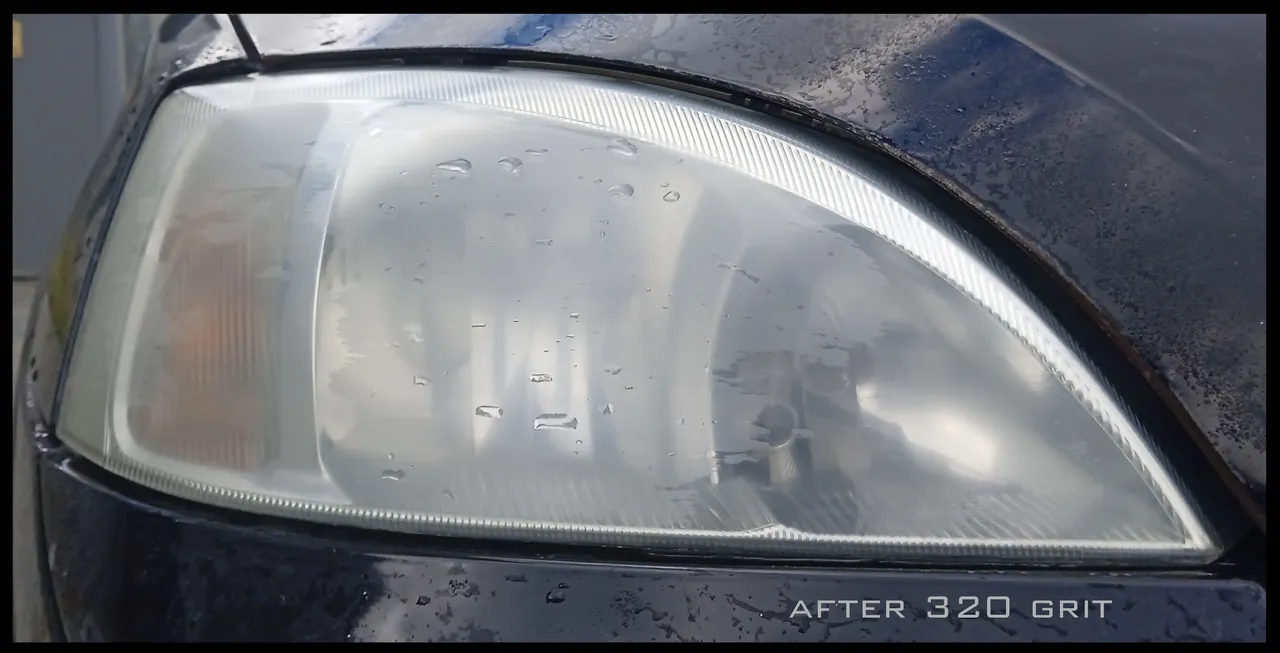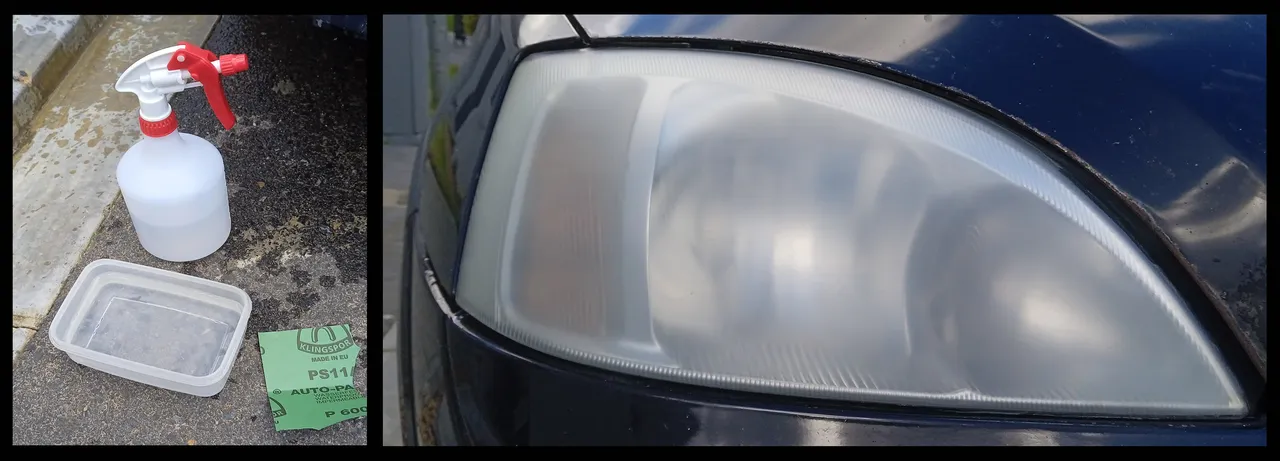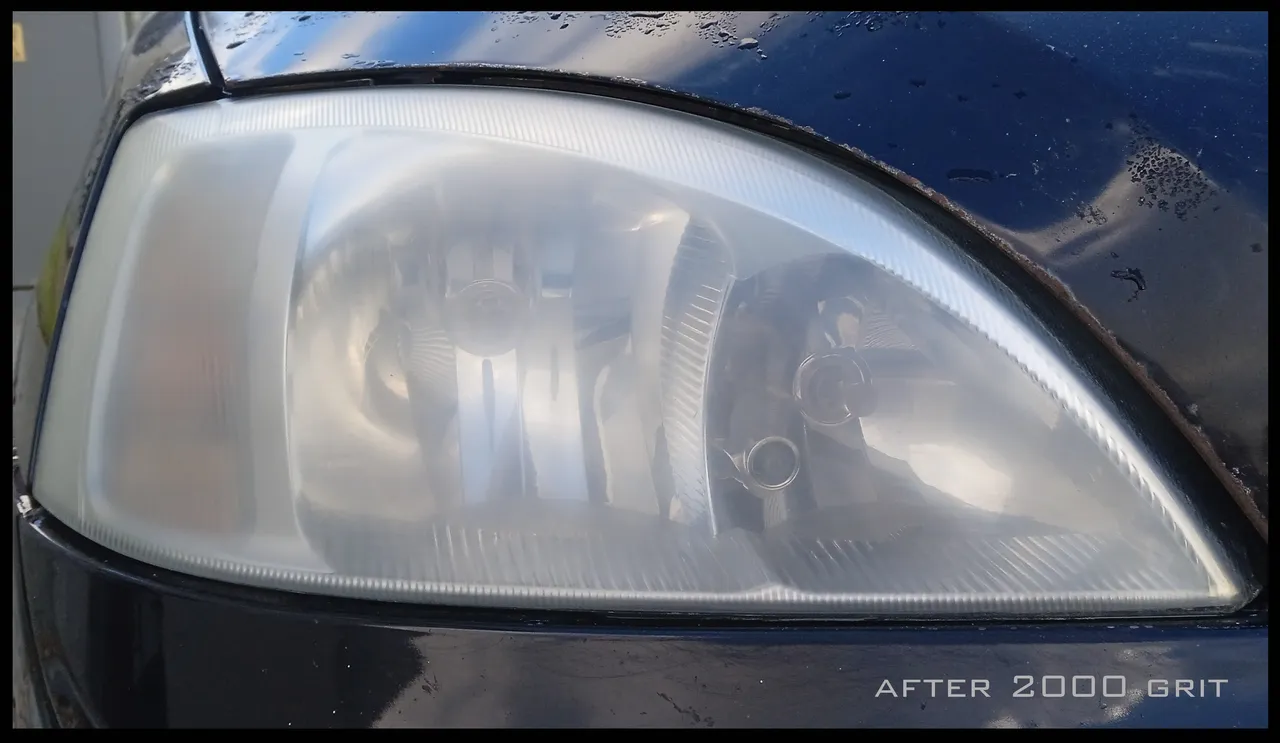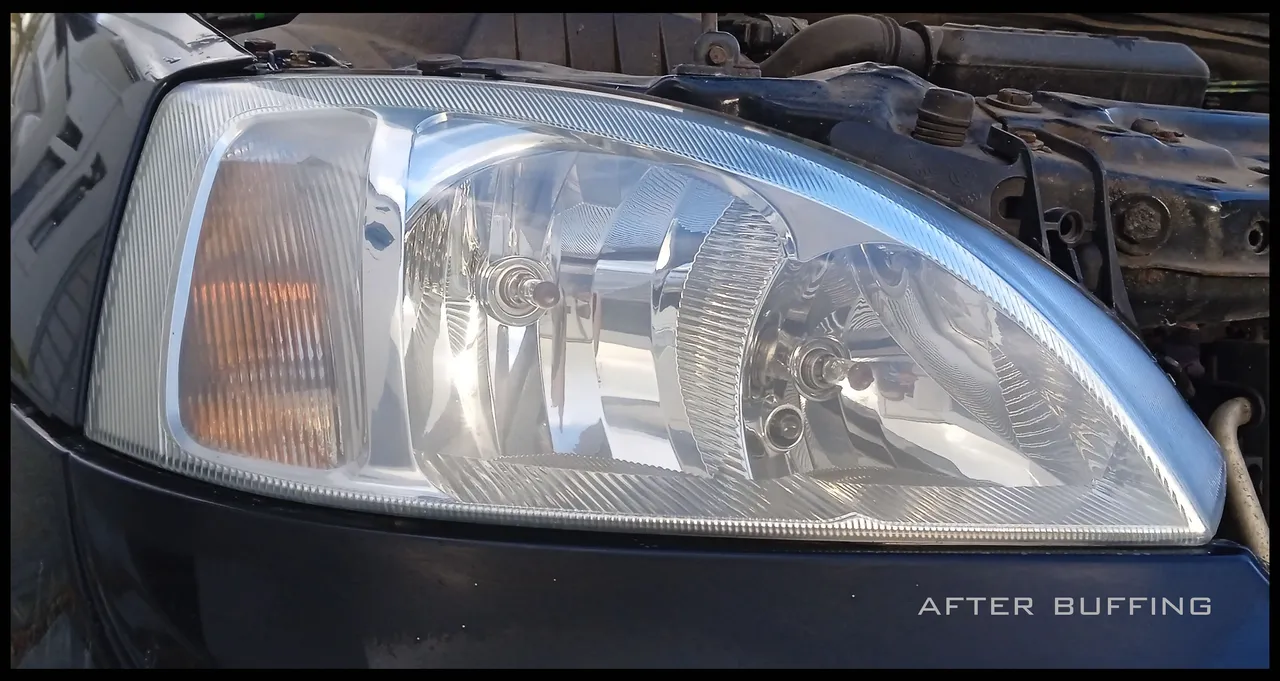
YouTube is evil, but it can be productive at times too.
A couple days ago I found a video in my feed about making headlights shiny. I don't look at my headlights very often but seeing as I'm embarking on restoring my car bit by bit, I figured it's probably not a bad idea to have a look at how bad mine are.
Hmmm. They were pretty bad. In the top left you can see the yellow oxidizing of what's left of the clear coat that covered my headlight originally - many years ago.
So what's the process?
LOT
HANDSANDING!
It's not for the faint of hand or those who have short attention spans when it comes to projects like this and I had to do this over two days because there were other priorities as well.
To do it well, you need to go through a lot of different grits. I started at 320 and worked my way through to 2000.

I only ever use Klingspor water paper for this kind of thing. The water acts as a lubricant and seeing as I was working on a polycarbonate plastic, I chose to do it by hand for a few reasons. You have far more control over the sanding paper, you can vary the speed, you don't run the risk of electrocuting yourself (a big bonus!) and you can feel the surface of the plastic as you sand it.
Starting at 320 then 600, 800, 1200 and lastly 2000. I sanded it in a circular motion and the first very important step is to remove all of the clear coat so that you're down to the plastic. Once you are done with that grit in a circular motion, then sand in a horizontal direction before moving on to the next grit. Below is what it looked like after 800 grit. It is going to look hazy like this until you buff it. At this point you can just take a short cut and spray it with UV resistant, polycarbonate friendly clear coat that's specifically designed for headlights. You don't sand it super fine when using clearcoat as it needs to be able to grip the plastic. I didn't do that though. Sucker for punishment? Yup. I am.

As far as the water goes, I used both a spray bottle to keep the surface of the lens wet and a container of water as well. The spray bottle can be used to wash down any grit and plastic that comes off from the sanding, while the container is what I used to rinse the gunk off my waterpaper as I went along. Then it doesn't get gummed up.
After each sanding, it's good practice to throw the water from the container out. Why? Because it contains sanding grit from the previous sand which is a much lager size than what you're going to use next. This could make deep gouges in your work when you go to the next finer sand. Also, wash off the lens really well between sanding grits.

Once all the sanding is done and your fingers are raw, you can blast out the rotary buffer and buff it a bit with the wool pad and a touch of polish, then follow that up with the foam disc. You don't want to do this at a high speed (plastic melts when hot and you're creating friction on the surface), so keep it at low revs (1200 to 1500rpm). I moved across the surface in a horizontal direction and relatively slowly. Once I was pretty sick and tired of this and it seemed like there was a lot more clarity, I buffed it up with a microfibre cloth. I was well impressed with the end result and while I know that it's not going to last forever, it's still a whole lot better than it was the day before. I've now done the other one as well and the difference in the light it emits at night is insane.
The other fun part of this? Because you've now lost some of your fingerprints to this process, you'll be driving down the road and judging everyone else's lights 🤣 Enjoy the process, it will make you feel victorious having made something look this pretty...

Let me know what you thought of this self inflicted torture and what you would have done differently.
